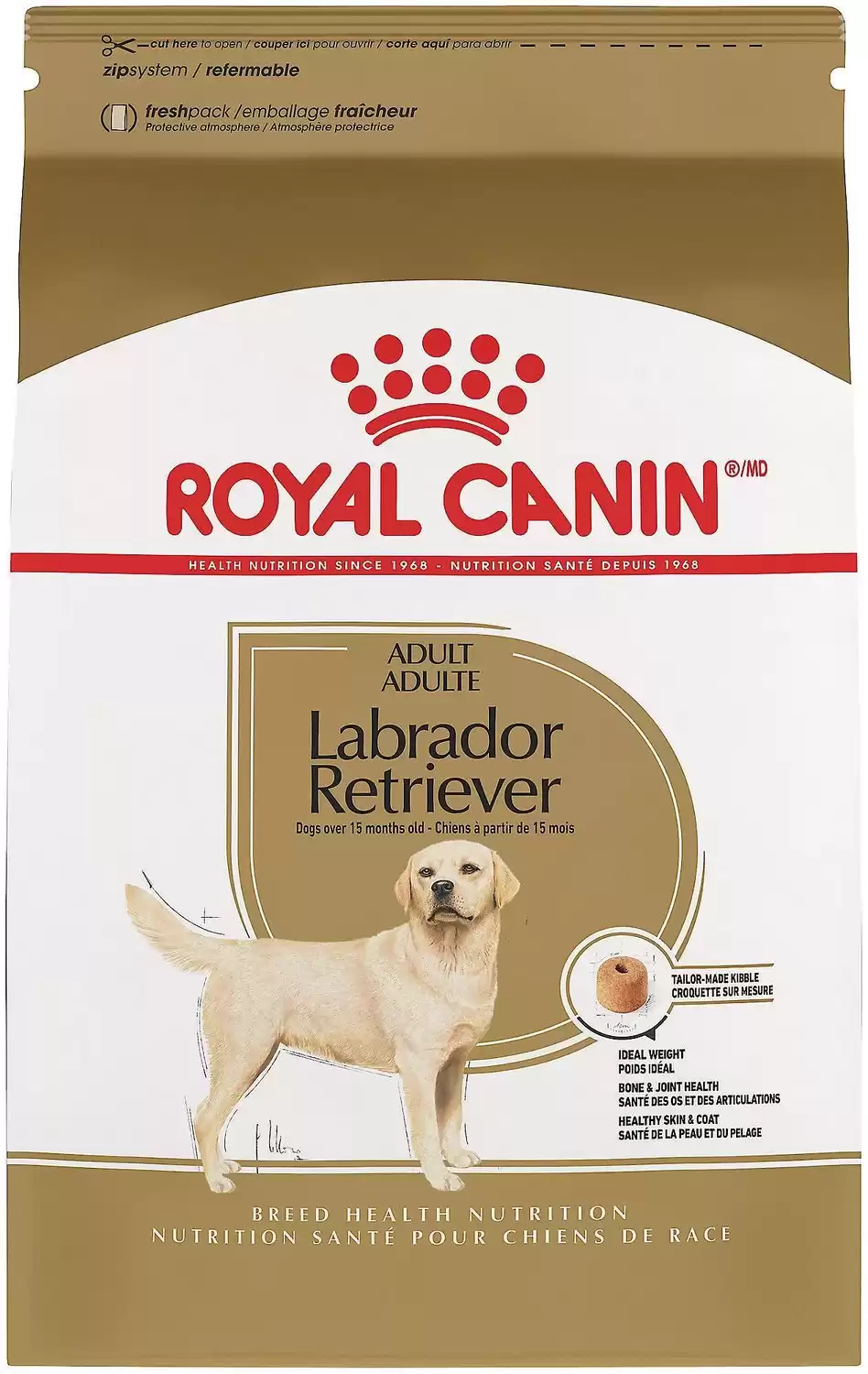Labrador Retriever
Canis lupus
Well-balanced, friendly and versatile!
Advertisement
Labrador Retriever Scientific Classification
- Kingdom
- Animalia
- Phylum
- Chordata
- Class
- Mammalia
- Order
- Carnivora
- Family
- Canidae
- Genus
- Canis
- Scientific Name
- Canis lupus
Read our Complete Guide to Classification of Animals.
Labrador Retriever Conservation Status
Labrador Retriever Facts
Labrador Retriever as a Pet:
- General Health
- Energy Level
- Shedability
- Trainability
- Intelligence
- Tendency to Chew
- Size
- Family and kid friendliness
- Yappiness / Barking
- Moderate
- Separation Anxiety
- High
- Preferred Temperature
- Average climate
- Exercise Needs
- Moderate
- Friendly With Other Dogs
- High
- Pure bred cost to own
- $300 to $1,000+
- Dog group
- Sporting
- Male weight
- 65-80 lbs
- Female weight
- 55-70 lbs
This post may contain affiliate links to our partners like Chewy, Amazon, and others. Purchasing through these helps us further the A-Z Animals mission to educate about the world's species.
View all of the Labrador Retriever images!
According to the rankings by the American Kennel Club, the Labrador Retriever is the most popular dog breed.
Breed History
Labrador Retrievers are a gun dog breed that was bred from Canadian fishing dogs found in the Labrador Territory, northwest of and in Newfoundland. These ancestors of today’s labrador were also known as St. John’s Water dogs, after the capital of Newfoundland.
See all of our expert product reviews.
Known for their impressive water skills, this breed became popular among sailors and was brought to the United Kingdom in the nineteenth century, and were bred with British hunting dogs to create what is now known as the Labrador Retriever.

Labrador Retrievers have coats that may be of different colors, including black, yellow, or chocolate brown. The scientific name of the Labrador Retriever is Canis lupus familiaris.
Labrador Retrievers are easy-going, friendly, and loyal dogs. They make excellent family pets and are also a popular option for service dogs. Learn more about the best dog breeds for families with children here.
The Different Types of Labradors and Labrador Mixes
Labrador crossbreeds run the gamut. In fact, there are more than 20 labrador crossbreeds, including:
- Corgidor
- Dalmador
- Labradoodle
- Australian labradoodle
- Mini labradoodle
- Boxador
- Labraheeler
- Mastador
- Aussidor
- Labradane
- Goldador
- Pitador
- Huskador
- Spanador
- German Sheprador
- Springdor
- Labmaraner
- Labraheeler
- Boxador
- Pyrador
- Bassador
- Beagador
- Borador
- Cavador
- Dachsador
Owning a Labrador Retriever: 3 Pros and Cons
| Pros! | Cons! |
|---|---|
| Friendly: Labrador Retrievers are a very friendly and loving dog. | High Exercise Need: Labrador Retrievers are an active breed. They will need regular exercise every day. |
| Kid-Friendly: This breed makes a wonderful family dog. They are gentle, very tolerant with kids, and love to play. | Kid-Friendly: This breed makes a wonderful family dog. They are gentle, very tolerant with kids, and love to play. |
| Easy to Groom: Labrador Retrievers have short hair, and their coat is easy to maintain. | Shedding can be a problem: These dogs sheds extensively twice a year and you need to brush them regularly to keep on top of this. |
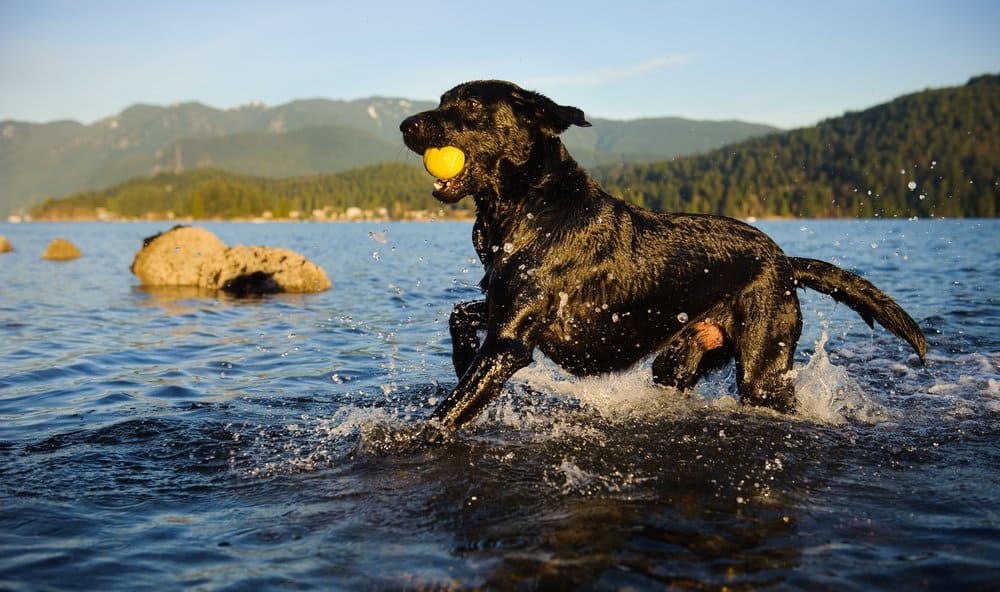
©everydoghasastory/Shutterstock.com
Health and Entertainment for your Labrador Retriever
See all of our expert product reviews.
Size and Weight
Labrador Retrievers are a medium-sized dog breed. Male Labrador Retrievers are slightly larger than females. A male Labrador is between 22.5 and 24.5 inches tall and weighs between 65 and 80 pounds. Females are between 21.5 and 23.5 inches tall and weigh between 55 and 70 pounds. Three-month-old puppies weigh between 21 and 29 pounds. At six months, a puppy will weigh between 40 and 54 pounds. Labrador Retrievers will be fully grown between the ages of 16 and 19 months.
| Male | Female | |
|---|---|---|
| Height | 24.5 inches | 23.5 inches |
| Weight | 80 pounds | 70 pounds |
Common Health Issues
If you will be bringing home a Labrador Retriever, it is important to be aware of some of the more common health issues that impact this breed. Overall, they are a healthy breed, but there are still a few conditions you will want to be on the lookout for.
One condition that can affect Labrador Retrievers is hip dysplasia. This is an inherited condition where a dog’s thighbone does not fit correctly into the hip joint. Over time, this can be painful and may cause a dog to limp.
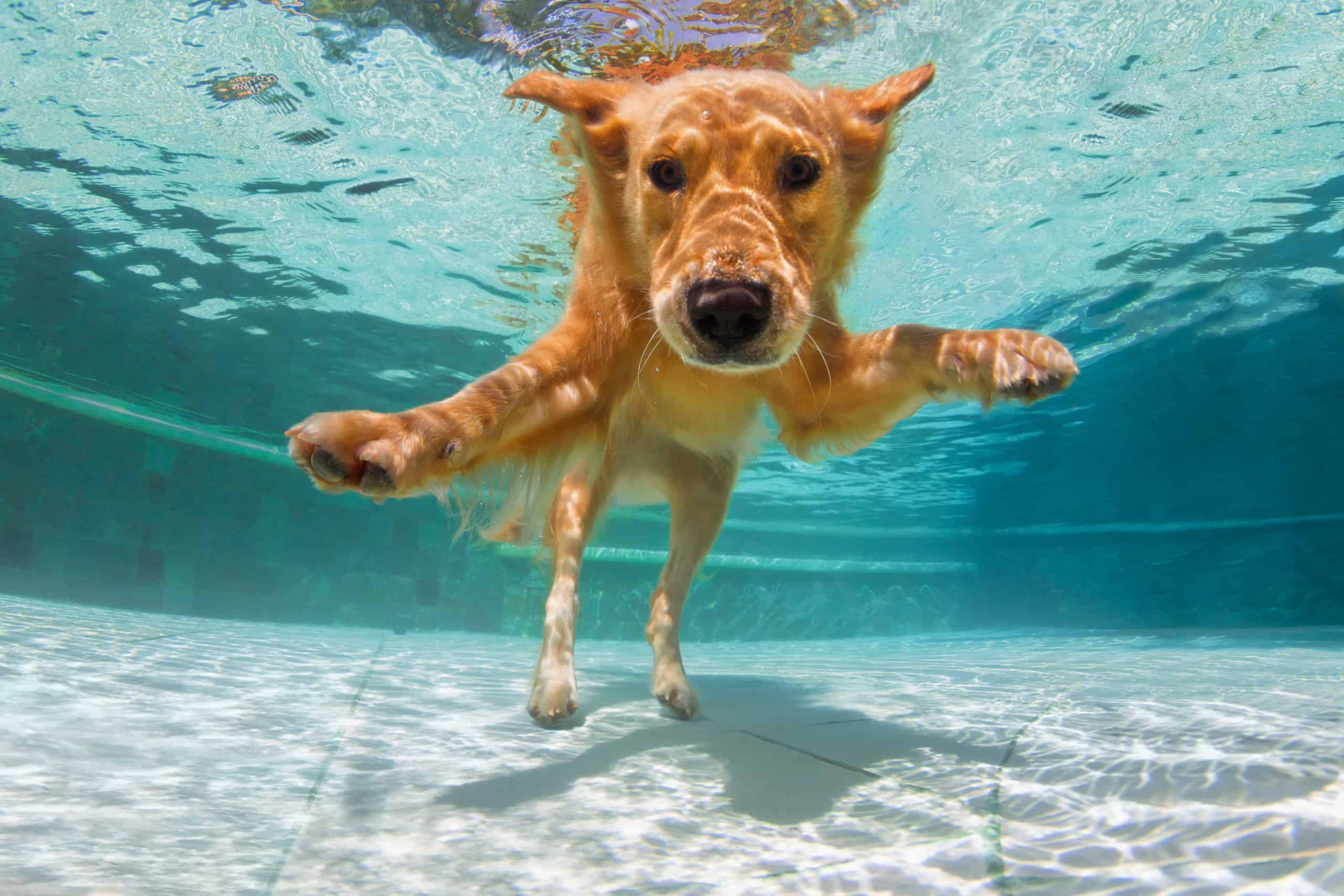
Labradors love to swim but always monitor your dog when in the water.
©Denis Moskvinov/Shutterstock.com
Another condition that Labrador Retrievers may develop is Progressive Retinal Atrophy, or PRA. The retina of dogs with this condition will slowly deteriorate until the dog completely loses their vision. Night blindness occurs before daytime blindness.
Some Labrador Retrievers may also suffer from epilepsy. Epilepsy is a seizure disorder. Seizures in a dog may look different from those in humans; you may notice your dog exhibiting very strange behavior like staggering, hiding, or running around. If you believe your dog has had a seizure, you should bring them to the vet immediately.
To review, some of the major health concerns that Labrador Retrievers may face include:
- Hip dysplasia
- Progressive Retinal Atrophy (PRA)
- Epilepsy
Temperament and Behavior
Labrador Retrievers are very friendly dogs. They have very even-tempered personalities, which makes them great family dogs. Labrador Retrievers are also very active and playful dogs. When they are still puppies, they are even more active and energetic.
Unlike some other dog breeds that are more suspicious of strangers, most Labrador Retrievers are generally friendly and trusting of strangers. Their traits and personality do not make them the best choice for a guard dog.

Generally trusting and friendly, Labs do not usually make good guard dogs.
©4 PM production/Shutterstock.com
How to Take Care of a Labrador Retriever
Since every dog breed is different, caring for a Labrador Retriever will be different from caring for other dog breeds. You will want to think about the specific health concerns, nutritional needs, and activity needs of Labrador Retrievers when creating your care plan.
The Best Dog Food for Labrador Retrievers
When you are selecting food for your adult or puppy Labrador Retriever, it is always important to choose quality dog food from a reputable company. You may also want to choose to put together a homemade diet for your dog. If you do this you will want to consult with the veterinarian to make sure you are providing your dog with all the vitamins and nutrients they need.
Luckily for Labrador Retriever owners, Royal Canin has Royal Canin Labrador Retriever Adult Breed Specific Dry Dog Food.
This dog food just for labs enriches your Labrador Retriever’s diet with DHA, EPA, and glucosamine for pain-free joints that stay active. The balanced calorie, protein and fat content will keep Labrador Retrievers full so their weight stays balanced, too.

Dog food is food specifically formulated and intended for consumption by dogs and other related canines.
©Jaromir Chalabala/Shutterstock.com
Pick up Royal Canin Labrador Retriever Dog Food by following the link below. Also, have a look at our page with the complete reviews of the best food for Labrador Retrievers here.
- Meet the nutritional needs of purebred Labrador Retrievers
- Support bone and joint health with EPA, DHA, and glucosamine
- Exclusive donut-shaped kibble encourage the dog to chew and eat food slowly
- Precise calorie and fat content for labs
Some Labrador Retrievers face problems with obesity, so you will want to closely monitor their food consumption and make sure you are feeding them the appropriate amount. The right amount of food will vary for different dogs based on their activity level, age, health concerns, and other facts. You can always check with the vet, but in general Labrador Retrievers should eat between 2.5 to 3 cups of food each day, broken into two meals.

Make sure you feed your Labrador puppy the correct food so they avoid bone disorders!
©Pavel Hlystov/Shutterstock.com
Labrador Retriever puppies will grow very quickly, especially between the ages of four and seven months. If they aren’t fed the right type of food, it may make them more susceptible to different bone disorders. Choose a lower-calorie puppy food for your puppy for this reason. Two-month-old puppies should eat between 7 and 9 ounces of food, split into four meals, three-month-old puppies should eat between 9 and 11 ounces of food split into three meals, and six-month-old puppies should eat between 12 and 16 ounces of food split into 2 meals.
Maintenance and Grooming
Labrador Retrievers are very easy to groom. However, they do shed a good amount, so you will want to be sure to brush your dog regularly. It will also be important to bathe your Labrador Retriever about once every two months. This will help their coat look nice and will prevent them from starting to smell.
In addition to brushing your dog and giving him baths, you will also need to brush their teeth a few times a week to get rid of bacteria and tartar. Their nails should also be trimmed a few times a month to prevent them from getting too long and becoming uncomfortable.
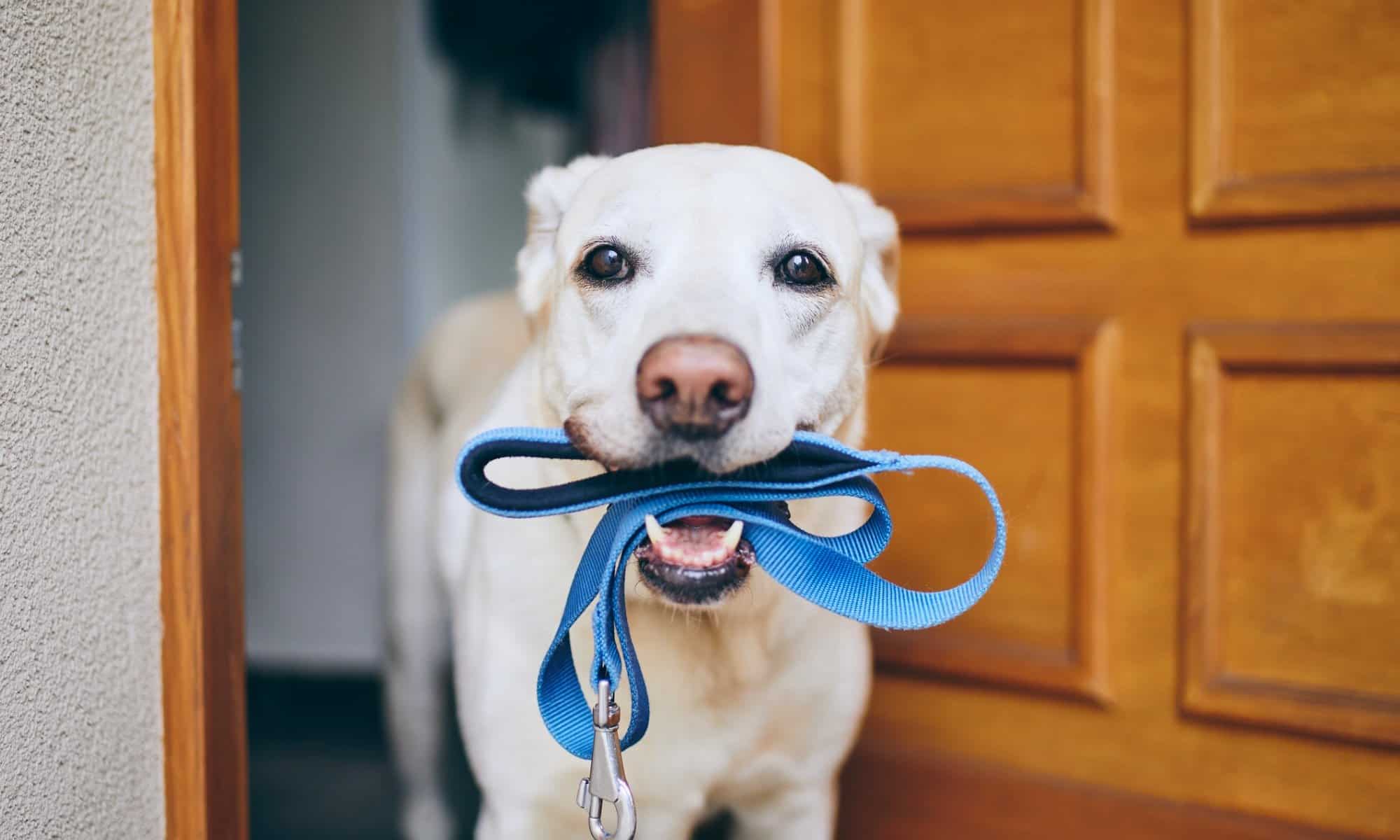
Labrador retrievers need regular exercise.
©iStock.com/Chalabala
Retriever Training
Even though they have a very even-tempered personality, it will still be important to train your Labrador Retriever. However, doing so should be relatively easy since Labrador Retrievers are very eager to please their owners. When choosing a training method or looking for an obedience class for your Labrador Retriever, be sure to choose one that uses positive reinforcement. Your lab will respond much better to this type of training.
Retriever Exercise
Labrador Retrievers are very active dogs. Making sure your dog gets regular exercise will be very important. They are a type of gun dog that was bred to assist with physically demanding tasks; if they are not being used as a working dog, you will want to make sure your dog gets at least half an hour to an hour of exercise every day.
If Labrador Retrievers’ exercise needs aren’t met, they may become destructive due to all of their excess energy. Lack of exercise can also cause a lab to bark excessively.
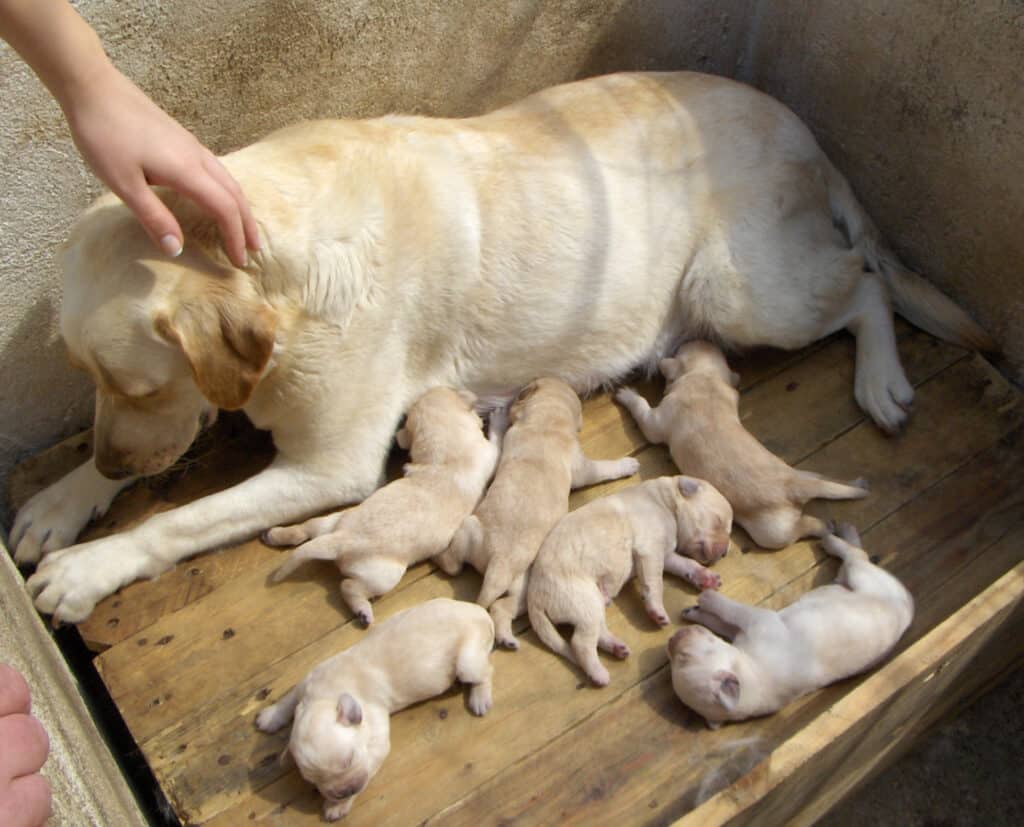
Labrador Retriever puppies can be very playful.
©iStock.com/Suzana Dreno
Retriever Puppies
If you are bringing a Labrador Retriever puppy home, there are a few things you will want to prepare first. Labrador puppies can be very playful and may ‘play’ with your belongings if they are left within reach. Before you bring home your new puppy, be sure to puppy-proof your home and move anything that could be hazardous or that you wouldn’t want to see destroyed.
Be prepared to give your new puppy daily exercise. Labrador puppies will need to be able to run around inside or outside and should accompany you for some shorter walks. Just be cautioned that Labrador Retrievers have a reputation for being workaholics, so they can push themselves to the point of exhaustion.
It will also be important to begin training your new puppy pretty much as soon as you bring them home. You can look for a puppy training class to help your dog learn commands and how to act around other people and dogs. Labrador Retrievers respond best to positive reinforcement training programs.

©Gordon Mackinnon/Shutterstock.com
Labrador Retrievers and Children
If you’re looking for a dog breed that does well with children, a Labrador Retriever is an excellent choice. This breed is very friendly and outgoing. They enjoy playing with children and can be very tolerant with younger kids. As with all other dog breeds, it is still always a good idea to supervise children when they are with a lab.
Dogs similar to Labrador Retriever
Curly-Coated Retrievers, Chesapeake Bay Retrievers, and American Water Spaniels are three dog breeds that share some similarities with Labrador Retrievers.
- Curly-Coated Retriever: Curly-Coated Retrievers are also gun dogs, like the Labrador Retriever. Both of these breeds are about the same size, with the average weight for a male Labrador Retriever being 67.5 pounds and the average weight for a male Curly-Coated Retriever being 72.5 pounds. Labrador Retrievers are more intelligent and more sensitive than Curly-Coated Retrievers, however.
- Chesapeake Bay Retriever: A Chesapeake Bay Retriever is another gun dog. Both dog breeds can have similar coloring and have a waterproof coat. Chesapeake Bay Retrievers can be more stubborn and harder to train than Labrador Retrievers.
- German Shorthaired Pointer: The German Shorthaired Pointer and Labrador Retriever are both gun dogs with a very affectionate personality. They are both also very easy to train and love to play. Labrador Retrievers have a greater need for social interaction and are less likely to roam away.
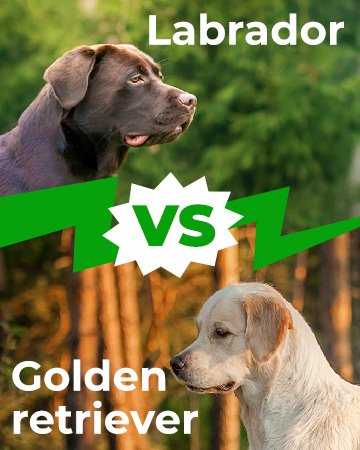
Labrador Retriever vs Golden Retriever
Golden Retrievers and Labrador Retrievers are both very intelligent, playful, and energetic dogs. Both breeds can make a great addition to a family and do well with kids. Both breeds are around the same height (between 22 and 24 inches) and have long tails, folder ears, and webbed feet. They both also enjoy the water and swimming.
There are a few key differences between the two dog breeds, though. Golden Retrievers have a longer snout. Their coats are also water-repellent and may be wavy. Labrador Retrievers have a water-resistant coat with a medium muzzle, that isn’t tapered like that of a Golden Retriever. They are also more muscular.
Golden Retrievers, as their name implies are golden. They can be found in different shades of gold, from more of a blonde to gold with a hint of red. Labrador Retrievers come in three different colors: yellow, black, or chocolate.
There is also Labrador/Golden Retrievers mix breed. This mix shares characteristics with both Labs and Goldens; they are loving, loyal, and energetic. Getting a Labrador/Golden Retriever mix, known as a Goldador, allows you to enjoy some of the best things about each individual breed.
Famous Labrador Retrievers
As the most popular breed with the American Kennel Club, it only makes sense that Labrador Retrievers are popular with celebrities as well. Here are a few famous Labrador Retrievers:
- Buddy: Bill Clinton’s Chocolate Lab
- Bubba: Minnie Driver’s Black Lab
- Rex: Sarah McLachlan’s Black Lab
- Holden: Gwyneth Paltrow’s Black Lab
Popular Names for Labrador Retrievers
While the scientific name for a Labrador Retriever is Canis Lupus Familiaris, that’s probably not what you want to call your lab. Below are some popular names for Labrador Retrievers.
- Buddy
- Blu
- Guinness
- Diesel
- Buster
- Molly
- Sadie
- Coco
- Bella
- Luna
Labrador Retriever FAQs (Frequently Asked Questions)
How much does Labrador Retriever cost to own?
If you purchase a Labrador Retriever from a breed it will likely cost between $300 and $1,000, however, the cost could be higher if you are looking for a field-trial dog or a show dog. Adopting a Labrador Retriever from a shelter or a rescue organization will be cheaper and will probably cost a few hundred dollars to cover application fees and vaccinations.
In addition to the money you spend to bring home a Labrador Retriever, you should also budget for all the other expenses that are associated with owning a dog. These include medical bills, training, food, toys, and other supplies. Your first year owning the dog will be the most expensive and could cost $1,000 or more. Each year after that, you should still budget between $500 and $1,000 for expenses.
Is a Labrador Retriever good with kids?
Yes, Labrador Retrievers are very good with kids. They are friendly, loving, and enjoying playing. They are also very even-tempered and can make a great companion for a child.
How long does Labrador Retriever live?
The average life expectancy for a Labrador Retriever is between 10 and 12 years.
What are Labrador Retrievers known for?
Labrador Retrievers are known for their very friendly and outgoing personality. This breed does well with children and is even friendly with most strangers. Labrador Retrievers are also known for their yellow, black, or chocolate coats.
What color lab is the best?
Even though many people associate yellow labs with being a service dog, black labs with being a working dog, and chocolate labs with being a family dog, the truth is Labrador Retrievers of all colors are great pets and wonderful companions. All three Labrador Retrievers share the same scientific name: Canis lupus familiaris.
How big do Labrador Retrievers get?
Labrador Retrievers are a medium-sized dog breed. Males typically weigh between 65 and 80 pounds and are between 22.5 and 24.5 inches tall. Females weigh between 55 and 70 pounds and are between 21.5 and 23.5 inches tall.
Are Labrador Retrievers herbivores, carnivores, or omnivores?
Labrador Retrievers are Omnivores, meaning they eat both plants and other animals.
What Kingdom do Labrador Retrievers belong to?
Labrador Retrievers belong to the Kingdom Animalia.
What class do Labrador Retrievers belong to?
Labrador Retrievers belong to the class Mammalia.
What phylum to Labrador Retrievers belong to?
Labrador Retrievers belong to the phylum Chordata.
What family do Labrador Retrievers belong to?
Labrador Retrievers belong to the family Canidae.
What order do Labrador Retrievers belong to?
Labrador Retrievers belong to the order Carnivora.
What genus do Labrador Retrievers belong to?
Labrador Retrievers belong to the genus Canis.
What type of covering do Labrador Retrievers have?
Labrador Retrievers are covered in Hair.
What is an interesting fact about Labrador Retrievers?
Labrador Retrievers are well-balanced, friendly, and versatile!
What is the scientific name for the Labrador Retriever?
The scientific name for the Labrador Retriever is Canis lupus.
How long do black Labradors live?
The average lifespan for a black labrador retriever is 10-12 years.
Thank you for reading! Have some feedback for us? Contact the AZ Animals editorial team.
Sources
- David Burnie, Dorling Kindersley (2011) Animal, The Definitive Visual Guide To The World's Wildlife / Accessed November 11, 2008
- Tom Jackson, Lorenz Books (2007) The World Encyclopedia Of Animals / Accessed November 11, 2008
- David Burnie, Kingfisher (2011) The Kingfisher Animal Encyclopedia / Accessed November 11, 2008
- David Burnie, Dorling Kindersley (2008) Illustrated Encyclopedia Of Animals / Accessed November 11, 2008
- Dorling Kindersley (2006) Dorling Kindersley Encyclopedia Of Animals / Accessed November 11, 2008
- American Kennel Club / Accessed November 23, 2020
- Wikipedia / Accessed February 12, 2023
- Labrador Retriever Club / Accessed November 23, 2020
- The Labrador Site / Accessed November 23, 2020
- The Dog People / Accessed November 23, 2020
- AKC / Accessed February 8, 2023
- AKC / Accessed February 12, 2023






